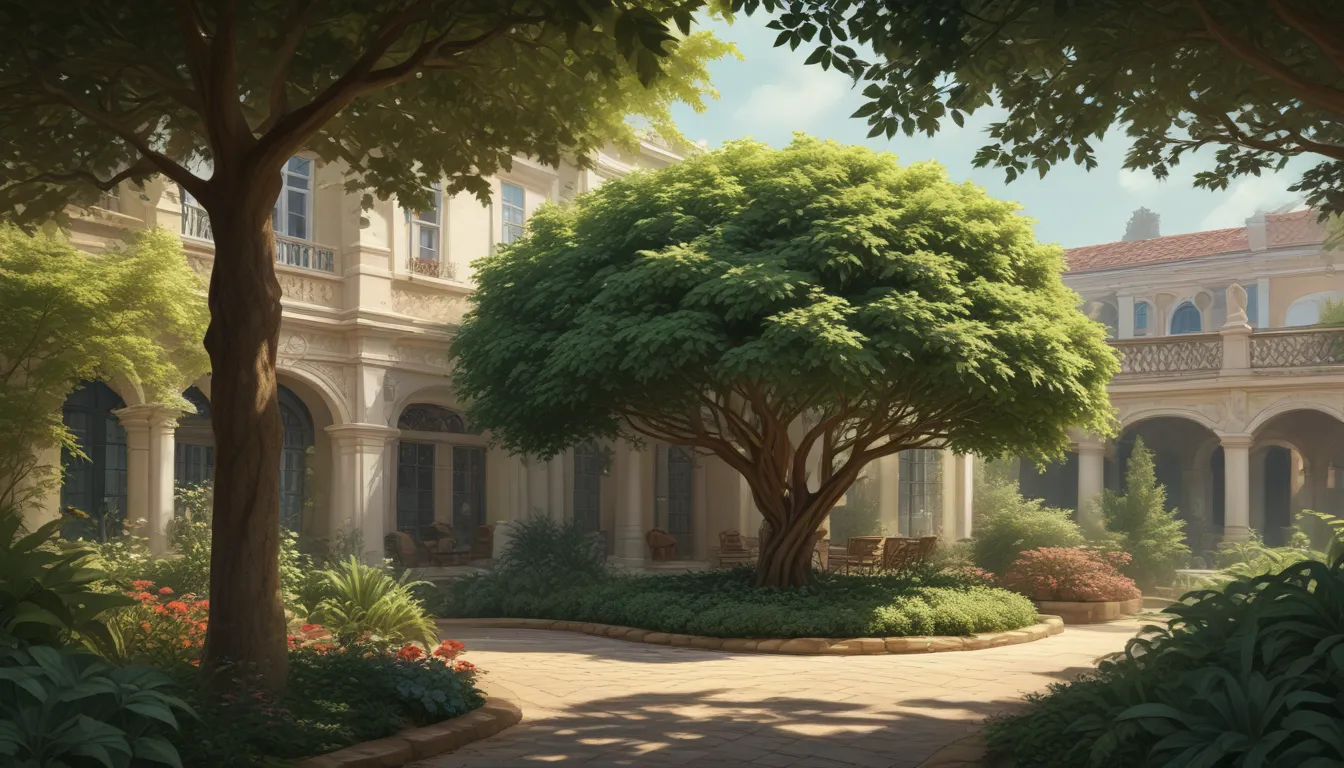A Note About Images: The images used in our articles are for illustration purposes only and may not exactly match the content. They are meant to engage readers, but the text should be relied upon for accurate information.
Are you looking to breathe life and color into the shaded areas of your garden? Embrace the world of shade-tolerant plants, where beauty thrives under the canopy of larger trees. These resilient greens have adapted to minimal sunlight, offering a unique charm to your outdoor space. In this comprehensive guide, we’ll explore the fascinating realm of shade-tolerant plants, from their characteristics and benefits to the challenges of growing them. Let’s dive into the shadowy greens and discover how they can enrich your gardening experience.
Unveiling the World of Shade Tolerant Plants
Shade-tolerant plants have a remarkable ability to flourish in conditions where sunlight is scarce. They thrive under the filtered light of larger plants, making them perfect for shaded gardens or underplanting in wooded areas. These plants come in a variety of shapes and sizes, each with its unique adaptation to low light conditions.
- Shade Tolerance Varies: Some plants require only light shade, while others can thrive in deep shade. This diversity allows for a rich understorey in forests and shaded gardens.
The Unique Characteristics of Shade Tolerant Plants
Shade-tolerant plants exhibit distinct features that set them apart from sun-loving varieties. Understanding these key characteristics can help you appreciate their beauty and resilience.
- Leaf Characteristics: These plants often have larger, darker green leaves compared to sun-loving plants. The increased leaf surface area allows for maximum photosynthesis under low light conditions.
- Slow Growth Rate: Due to reduced sunlight, shade-tolerant plants may have a slower growth rate. This can be beneficial for those seeking low-maintenance landscaping options.
- Water Efficiency: Shade-tolerant plants are efficient in water use. With limited exposure to direct sunlight, they lose less water through evaporation, making them more drought-resistant.
Exploring Popular Shade Tolerant Plants
If you’re considering adding shade-tolerant plants to your garden, here are a few popular choices that can thrive in shaded environments:
- Hostas: Known for their lush foliage and variety of sizes and colors, hostas can brighten up even the darkest corners of your garden.
- Ferns: Delicate fronds of ferns add texture and greenery to shaded areas, creating a tranquil ambiance.
- Astilbes: These plants bring vibrant colors to shady gardens with their feathery, plume-like flowers available in various shades.
Benefits of Cultivating Shade Tolerant Plants
Embracing shade-tolerant plants in your garden offers a multitude of benefits beyond just aesthetic appeal. Let’s explore some of the advantages they bring:
- Prevention of Soil Erosion: Shade-tolerant plants can help prevent soil erosion in shaded areas where other plants may struggle to thrive.
- Increased Biodiversity: By providing habitats and food sources for insects and wildlife, these plants contribute to the biodiversity of your garden.
- Water and Fertilizer Efficiency: Shade-tolerant plants often require less water and fertilizer compared to sun-loving plants, making them an eco-friendly choice.
Overcoming Challenges in Growing Shade Tolerant Plants
While shade-tolerant plants offer numerous benefits, they also present challenges that gardeners need to address:
- Competition for Resources: These plants often compete with larger trees and shrubs for nutrients and water, necessitating strategic planting and care.
- Flowering in Shaded Areas: In densely shaded environments, flowering may be reduced as some shade-tolerant plants require a certain level of light to produce blooms.
Creating the Ideal Environment for Shade Tolerant Plants
To ensure the successful growth of shade-tolerant plants in your garden, consider the following factors:
- Light Conditions: While these plants thrive in low light, they still require some indirect sunlight for photosynthesis. Dappled shade under open canopy trees is ideal.
- Soil Quality: Opt for rich, well-draining soil that retains moisture without becoming waterlogged to support the growth of shade-tolerant species.
- Mulching: Regular mulching can help maintain soil moisture and temperature, promoting the vitality of shade-tolerant plants.
Designing a Serene Shade Garden
When incorporating shade-tolerant plants into your garden, consider creating a harmonious blend of plants of different heights and textures. Layering ground covers, ferns, and taller flowering plants can transform shaded areas into tranquil retreats.
Embracing Shade for a Green Oasis
As we unravel the world of shade-tolerant plants, we discover a hidden realm of resilience and beauty that thrives in the shadows. From lush ferns carpeting the forest floor to vibrant hostas illuminating secluded corners, each plant adds its unique touch to shaded spaces. By understanding and embracing these shadow-loving greens, we unlock new possibilities for creating beauty in every nook and cranny of our gardens. Whether you’re a seasoned gardener or a novice, let us celebrate the diversity and depth that shade-tolerant plants bring to our green spaces.
Embrace the Beauty of Shade-Tolerant Plants in Your Garden
As you embark on your journey of gardening in shaded areas, remember that life flourishes not only in the bright sunlight but also in the soft, dappled light of shade. By nurturing shade-tolerant plants, you invite a sense of tranquility and abundance into your outdoor oasis. So, let’s celebrate the beauty of shadows and the vibrant life they hold, hidden beneath the canopy of larger trees. Happy gardening in the delightful world of shade-tolerant plants!






